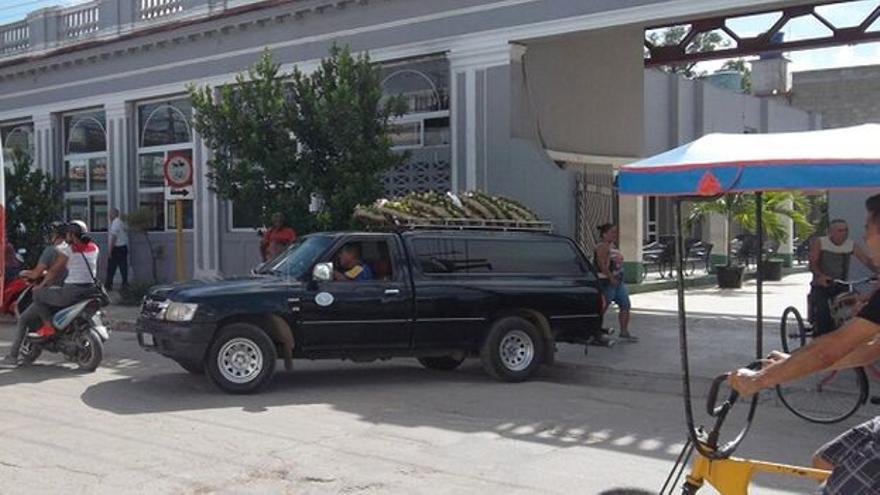
![]() 14ymedio, Madrid, 9 June 2023 — “The beginning of the presentation of the Observatory was delicate and beautiful: the prestigious Cuban flutist and clarinetist, Niurka González Núñez, performed Mujer Bayamesa, by Sindo Garay.” In these terms, the press release of the Presidency of Cuba on the launch of the Cuban Observatory on Gender Equality was expressed, more or less at the same time that two sexist murders were confirmed, with which the Island reaches 37 in the first six months, more than in all of 2022, when there were 34 victims.
14ymedio, Madrid, 9 June 2023 — “The beginning of the presentation of the Observatory was delicate and beautiful: the prestigious Cuban flutist and clarinetist, Niurka González Núñez, performed Mujer Bayamesa, by Sindo Garay.” In these terms, the press release of the Presidency of Cuba on the launch of the Cuban Observatory on Gender Equality was expressed, more or less at the same time that two sexist murders were confirmed, with which the Island reaches 37 in the first six months, more than in all of 2022, when there were 34 victims.
In the midst of an emergency situation, when there are already 1.6 femicides per week, the authorities — with the President of the Republic himself at the helm — dedicated the day to congratulating themselves on having achieved “this effort,” which is none other than the creation of an organization that will collect, process and make visible “indicators related to the situation and position of women and men, from a gender and legal approach.”
At the moment, the official count of femicide victims is far from the figure collected by independent feminist organizations and the independent press, although it is difficult to establish if the methodology is the same, since the official data come from “the judicial processes resolved in the courts of the country in 2022,” while the others refer to those perpetrated in the same period.
The statistics are buried in the last two sub-sections of Section Five, when they are surely the most searched and needed data in the document. In addition, the methodology is poorly explained, since the data are presented in two different sections: victims of intentional homicide due to gender and victims of intentional homicide by their partner or “former intimate partner.”
The statistics show, in reality, that one includes the other, so the general information on femicides is the most adequate. According to this statistic, 18 women were murdered in Cuba, 16 of them by people with whom they had a relationship, couples (six) or ex-partners (ten).
The remaining two were allegedly murdered by strangers. The majority of the victims (72%) were between 20 and 44 years old, and the cases place Havana at the head, with four victims, followed by Holguín, with three. The highest rate corresponds to Las Tunas, with 0.93 per 100,000 women, and the national average is 0.39.
With these numbers, the official statistics are far from reality, especially if from now on the reference will be the cases that go through the courts. Far from the perception that official data could increase the independent figures, which are nourished by citizen work and verification via social networks, the Observatory’s accounts risk moving away from reality and, consequently, hinder an analysis that helps address a major problem on the Island.
Díaz-Canel preferred to remain complacent and, at this Thursday’s presentation at the Capitol, described the Observatory as an “essential, important and comprehensive tool.”
The president said that from the analyses of those statistics “that cannot be cold,” they must advance in public policies that reduce the gap of inequality between men and women, an issue which, he believes, must reach the local environment.
More optimistic if possible was the Deputy Prime Minister, Inés María Chapman, who far from being more aware of the problems “remembered beautifully that ’there exists only one people; and in this people, in this Cuban color, we are women, we are men, there is the family, there is the whole nation,’” reads the sugary text.
On a day with the harshness of the deaths of Milsa and María Cristina, the minister spoke of Fidel Castro, “dear Vilma” and “so many glorious women who have fought for independence,” before insisting that we must move forward “disdaining hatred and sowing love. Let’s embrace full dignity from the heart, let’s overcome the impossible, and let’s say with a voice of fraternity and tenderness: No to gender violence,” she said.
There were representatives of the collaborating organizations, prominent among which were the ONEI – which provides data – and the Federation of Cuban Women (FMC), which independent feminist organizations have accused of working in an exclusive way and more in favor of the Revolution than of women.
Yo Sí Te Creo, Alas Tensas, and the Cuban Women’s Network have not yet pronounced themselves regarding the Observatory or the act, although the first had written a statement a few hours earlier in which it denounced the death of Yaiden Bolaños Morales, in El Naranjal (Matanzas), whose murder is not recorded as a femicide due to the impossibility of accessing the information needed to determine the circumstances.
However, Yo Sí Te Creo says it could meet the criteria of the United Nations and that “the official figures of causes of death in Cuba, by not recognizing femicides, perform biased analyses. An example is accidental deaths, which are increasing in women according to the Health Statistical Yearbooks, many of which occur at night, in unclear situations and without eyewitnesses (such as Yaiden’s), according to our experience in observation. And Cuba’s police investigation protocols do not incorporate indicators of gender violence.”
Translated by Regina Anavy
____________
COLLABORATE WITH OUR WORK: The 14ymedio team is committed to practicing serious journalism that reflects Cuba’s reality in all its depth. Thank you for joining us on this long journey. We invite you to continue supporting us by becoming a member of 14ymedio now. Together we can continue transforming journalism in Cuba.
